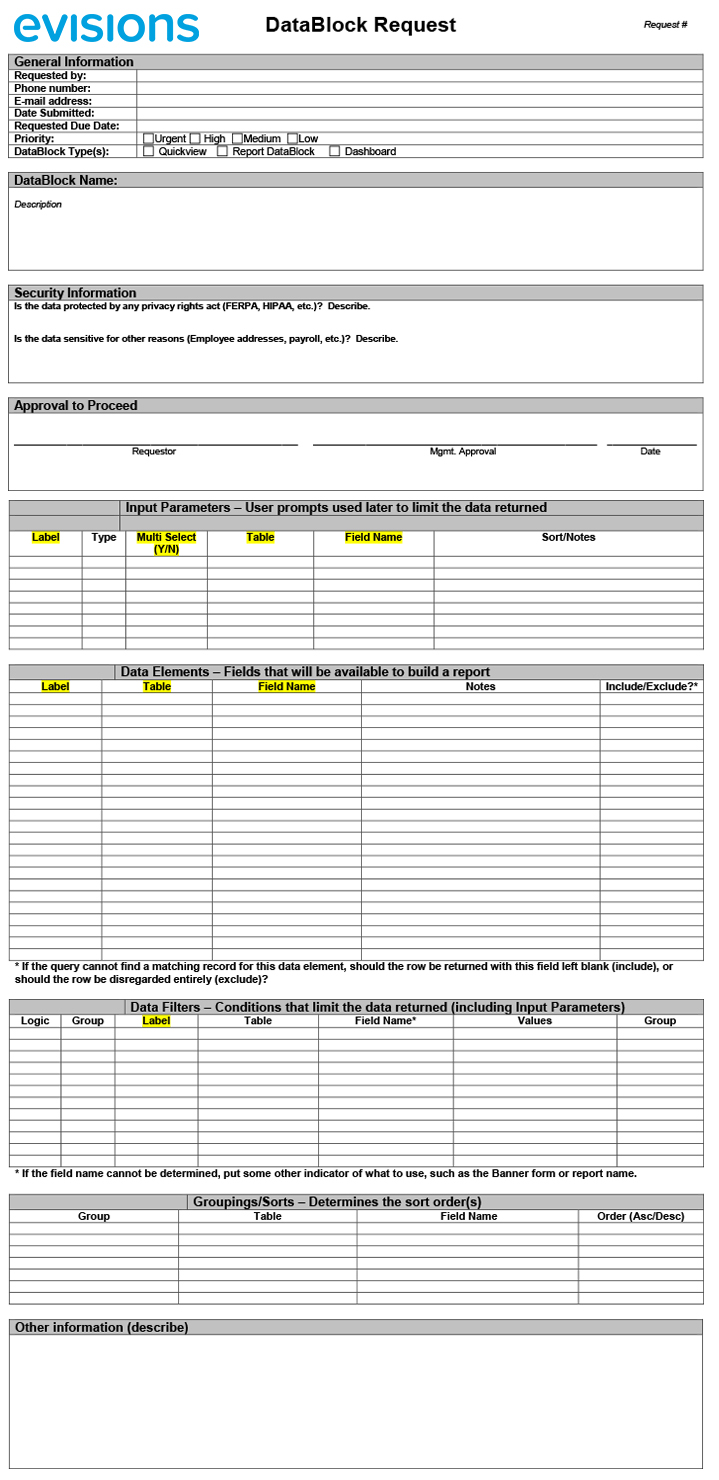From Acting to Reporting
In acting, the process is the preparation and work an actor undertakes to ‘become’ their character. Often called method acting, this manner of development is important to the actor’s ability to effectively convey the thoughts, feelings, and emotions of that character to the audience.
Similarly, a well-thought-out and well-implemented report request process is vital. It’s essential to the report creators, who need to be timely, focused, and accurate in their work. It is also equally necessary to the end users, who must be able to read, understand, and interpret the reports put in front of them.
What Are My Options?
The report request process may vary from institution to institution. It can be as simple as using your existing Help Desk or sending an email to a designated report request account. But the most comprehensive – and recommended – solution is to establish a system using forms.
When using forms for your report request process, you need to strike a balance. The form should be kept simple, as it will make it easier for the end users to complete. However, it should also be thorough, so that it provides the report writer with all of the necessary information and requirements. See the example on the right.
Report request forms allow you to fully utilize a ticketing system, which improves your ability to prioritize and track progress. They also facilitate feedback loops, for better communication between the report writer and end user.
Why Implement a Report Request Process?
There are three primary benefits to implementing a report request process:
- You can better organize your work
- It’s a good place to gather report requirements
- Prevents impromptu requests
Get Organized
When you establish a system for submitting and receiving report requests, you are better able to organize your work. As mentioned previously, the system will allow you to prioritize incoming report requests, track their progress, and improve lines of communication. (Recommended reading: Juggling Priorities and Ranking Report Requests) With a process in place, both the report writer and end user will understand what they need to do, why they need to do it, and how much time is needed to get it done.
Gathering Requirements
The ultimate goal is to find a system that satisfies both sides of the report request. This brings us to gathering report requirements. The goal of gathering requirements is to help the report writer and end user get on the same page and ensure the report achieves its desired results. A report request process, especially one that is based on using forms, is an excellent place to gather these requirements.
It is at this stage of the process that you can determine:
- What specific data needs to be conveyed
- Is this a brand new report?
- Are you changing or adding to an existing report?
- Did this report exist in a previous reporting tool?
- How the information should be displayed
Preventing Impromptu Requests
When implementing a report request process, it should be made clear to the end users that this new system puts an end to impromptu requests. All of the report details are gathered up front using the request form, or whatever other process is put in place.
“Hallway” and last minute phone requests don’t do anyone any good, especially the report creator. These requests are not documented, could easily be forgotten, and could hamper any progress that may already have been made in creating the report that was originally requested.
If changes or additions need to be made, they should be submitted once again through the established process. Then they’ll need to be evaluated against, and prioritized amongst, the existing report requests.
Let’s Clarify
We should clarify that creating a report request process does not mean the report writers and end users should only interact at the start and end of the process. It does not mean shutting off communication. In fact, the report request is part of a continuous feedback loop where the report writer stays in contact with the end user throughout the report creation process to make sure they are working toward the same desired result.
Conclusion
It might be a stretch to compare acting to reporting. (Out, damned report! Out, I say!) Yet, a similarity does exist in that they each require their respective participants to engage in a specific process in order to effectively achieve their desired outcomes. Just as an actor uses his/her process to connect to the audience, a report creator uses his/her process to ensure the end users get the information they need to make important operational and strategic decisions.
So while you may not have to prepare for the likes of Hamlet or King Lear, you will most certainly benefit from developing your own method to deal with the madness. Now, break a leg!





0 Comments
0 Comments